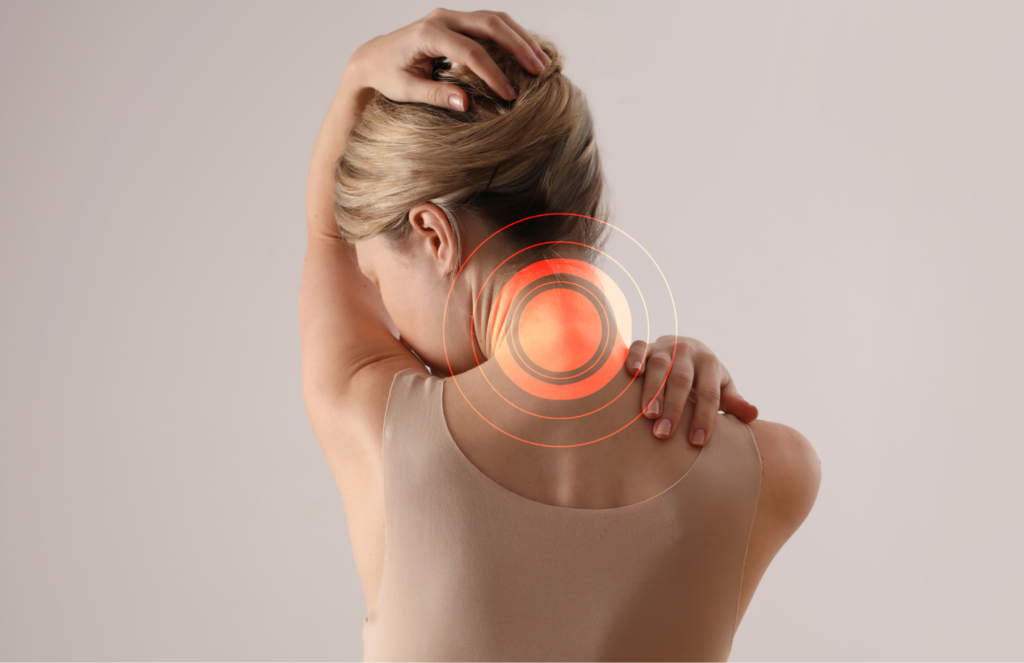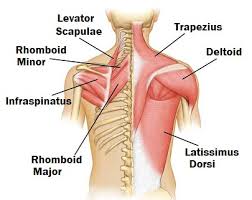Which Muscles in My Neck were Damaged the Most by My Forward Head Posture?

If you are still wondering, which muscles in my neck were damaged the most by my forward head posture then, you have come to the right place.
I am going to answer this question using my personal experience.
Basically, I developed bad neck posture because I was working for a multi-national corporation. I am not blaming the job. It’s just that my job profile required me to sit in front of the computer screen for hours daily.
This in turn meant that I was literally glued to the screen for hours. As time passed, my back started to slouch as my head was constantly shifting forward. It was as though it wanted to take a closer look at my computer screen.
This is what finally led to what we term as a crane neck posture.
I stated to feel a lot of unwanted pressure on the back and side of the neck. With time, my throat started to pain and I had a tough time sitting on my laptop chair for more than 20 minutes tops at one go.
So, I realized I needed to visit the doc.
Well, here is what I found:
Which This is What all I’ve Covered:
1) What Went Wrong with My Neck Posture?
2) Impact of My Forward Head Posture on My Cervical Flexors
3) Impact of My Bad Neck Posture on My Shoulder Blade Muscles
4) Impact of My Forward Neck on My Upper Thoracic & Lower Cervical Muscles
5) FAQs on Text Neck and Muscle Pain
6) How was My Overall Experience?
What Went Wrong with My Neck Posture?
A good neck posture in one wherein I am capable of seeing what lies right in front of me without having to bend my neck or raise it. Simply put, my head should be sitting right above my shoulders.
My ears should be in line with my shoulder blades. Well, they can be half an inch behind my shoulder blade as well.
Nonetheless, the ears should not be in front of the front shoulders.
Unfortunately, my ears always were 3 inches ahead of my body’s vertical line.
I later learnt that every inch that my head exceeded my body’s vertical line, added 12 pounds of unwanted weight onto my spine.
So, I was adding 35 pounds (or even more) of extra weight onto my cervical spine.
So, What Went Wrong?
I have already discussed the role of my laptop in gifting me a text neck. Nonetheless, I had coupled it with my awful habit of watching reels in my spare time.
I either sat on a couch or lay on the bed watching reels for hours. The posture was again not ideal. My head always shifted forward while I watched the videos on my cellphone.
So, my cellphone screen height was to blame for my nerd neck.
The end result was that in a few years, I had developed a permanent slouch.
So, even when I took a walk, my head would be two to three inches in front of my shoulders.
Impact of My Forward Head Posture on My Cervical Flexors
Well, now, let me disclose the muscles that were impacted the most by my vulture neck posture.
The first was a muscle that is located right in front of my cervical spine. This is also known as the longus colli and the longus capitus.
Both these muscle groups comprise of the cervical flexor muscle (the deep ones to be precise). In layman terms, these muscles are right in front of your cervical spine. They help provide stability to the neck.
In my case, the cervical flexors muscles were lengthened.
This is because I was constantly stretching my neck forwards. So, both the longus colli and the longus capitus stretched beyond their limit and became longer than normal.
The end result was a stiff and painful neck. It also resulted in my neck losing its optimal control mechanism.
So, when I asked the doctor, he said, “the lengthening of my cervical flexors was because I tucked my chin to my chest. This was because my head was shifting forward constantly from its normal position.”
Impact of My Bad Neck Posture on My Shoulder Blade Muscles
The second most affected muscle was the one located on my shoulder blade. These are also termed as the retractor muscles located on the shoulder blade.
These muscles help push my chest out and pull my shoulder blades in. This helps me maintain optimal posture – shoulders “in” and chest “out”.
My forward neck posture put extreme pressure on both my rhomboid muscles and the trapezius (the mid portion to be precise) muscles. As my shoulder blade retractors weakened, my shoulders hunched forward.
This lead to pain in the neck and the upper back area. It also forced my head to push forward even when I am performing a simple task such as walking down the alley.
Impact of My Forward Neck on My Upper Thoracic & Lower Cervical Muscles
The final muscle groups to be affected by my poor neck posture were the erector spinae. These muscles comprise of the lower cervical muscle and the upper thoracic muscles.
Their role is to maintain a spine that is straight and strong. These muscles also help me rotate my spine while I am shifting and twisting. Unfortunately, my forward head posture forced the erector spinae to lengthen unnaturally.
When the lower cervical muscle and the upper thoracic muscles lengthened, my spine lost its natural strength. I therefore found it tough to maintain a straight posture. My thoracic spine was damaged owing to my forward head tilt.
My head slid forward, my shoulders hunched and my upper back slouched. There was considerable stiffness, pain and discomfort on my neck, shoulder and the upper back area.
FAQs on Text Neck and Muscle Pain
Q-1: Which neck muscles are most affected by forward head posture?
A-1: Forward head posture primarily impacts the suboccipital muscles, sternocleidomastoid, levator scapulae, and upper trapezius. These muscles often become tight and shortened due to the head’s anterior displacement.
Q-2: How does forward head posture lead to muscle tightness?
A-2: The head’s forward position increases the load on certain neck muscles, causing them to contract continuously. As per bestforwardheadposturefix.com, “This prolonged contraction leads to muscle shortening and tightness”.
Q-3: Are there muscles that become weak due to forward head posture?
A-3: Yes, the deep cervical flexors, such as the longus colli and longus capitis, often become weak. Their weakness fails to counteract the forward pull of the head, exacerbating the posture issue.
Q-4: What are the consequences of muscle imbalances caused by forward head posture?
A-4: Muscle imbalances can lead to chronic neck pain, reduced range of motion, and increased risk of nerve compression. Over time, these issues may result in headaches and shoulder discomfort.
Q-5: Can forward head posture affect other areas of the body?
A-5: Yes, the altered posture can lead to rounded shoulders and upper back stiffness. It may also contribute to lower back pain due to compensatory changes in spinal alignment.
Q-6: How can one address muscle damage from forward head posture?
A-6: Corrective exercises focusing on strengthening weak muscles and stretching tight ones are essential. Maintaining proper posture throughout daily activities also helps prevent further muscle damage.
These insights underscore the importance of addressing forward head posture to maintain neck health and overall well-being.
How was My Experience?
There is only one word to describe my experience – terrible!
Without a shadow of a doubt, the pain and discomfort that I experienced was not worth describing.
What I would like to state is that I needed forward head posture fix. All the muscle groups of my neck were affected by my bad neck posture.
Apart from the muscles I’ve mentioned above, my suboccipitals muscles were also weakened. This in turn hampered my neck rotation and normal head movement to a great extent.
The pain, stiffness and discomfort caused was coupled with weakened tendons and ligaments. I would thus state that my forward head posture imbalanced the muscles in my neck and upper back.
I would recommend all of you reading my article to make an effort to have a good head posture. Avoid working for long hours on the computer table. Do not spend too much time on the cellphone.
Finally, make a conscious effort to avoid sliding your head forward.
References:

